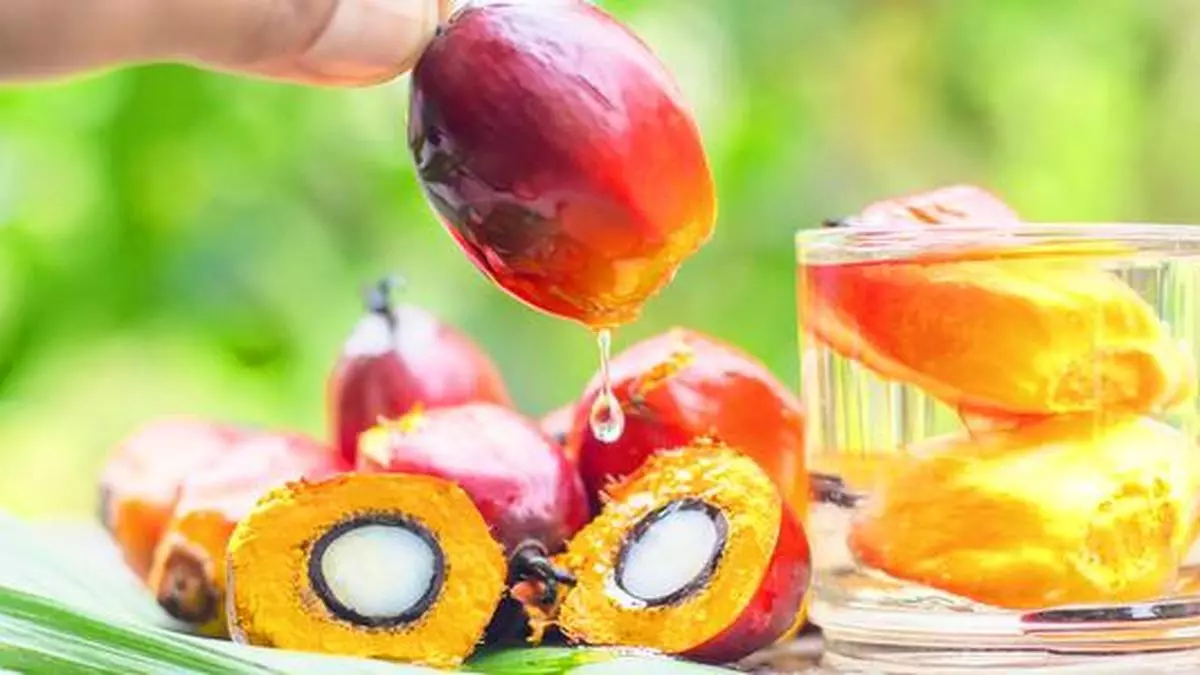Palm oil likely to rule higher than current levels in the short-term
Palm oil prices could rule at elevated than current levels in the short-term on falling harvest in Indonesia, its plans for higher bio-diesel blending and the upcoming festival season in India, analysts have said.
“Malaysian palm oil futures were above MYR (Malaysian ringgit) 3,930 per tonne, up for the fifth time in six sessions amid rises in rival oils on the Dalian and the CBoT markets,” said the Trading Economics website.
On the Bursa Malaysia Derivatives Exchange, crude palm oil for October delivery ended at MYR 3,975 a tonne on Wednesday. Crude palm oil for October delivery cost and freight to India was $1,030 (₹87,325) a tonne.
Price forecast
Research agency BMI, a unit of Fitch Solutions, said it has raised its price forecast for crude palm oil to MYR3,850 from MYR3,750 per tonne for the third-month crude palm oil futures in 2024. This is a 2.7 per cent increase.
“While this upward revision indicates that our earlier view that prices would ease throughout H2 2024 has not occurred to the extent that we expected, we remain below consensus and of the view that prices will face bearish headwinds into 2025, expecting an average price of MYR 3,700 up to end-2024,” it said.
Abdul Hameed, a Pakistan-based vegetable oil market analyst, said the palm oil market is expected to rule stable due to a combination of low inventories in key producing countries and stagnant production, alongside strong demand driven by major festivals such as Diwali and Christmas for the remainder of the year.
Low inventories
M Bukowski and B Swearingen of the Economic Research Service of the US Department of Agriculture (USDA) said in their oil crops outlook that global oilseed production for 2024-25 is forecast at a higher 690.5 million tonnes (mt). A higher soyabean and rapeseed crop is only being partially offset by lower sunflower seed, cottonseed, peanuts, and palm kernel, they said.
Hameed said major palm oil-producing countries such as Indonesia and Malaysia are currently experiencing low inventory levels. “This is largely due to lower-than-expected production earlier this year and steady exports. Low inventories mean there is less available supply to meet any sudden spikes in demand, which helps to support prices and market stability,” he said.
BMI said palm oil prices declined to a seven-month low of MYR 3,697 on August 7 as the Malaysian ringgit gained agains the dollar the previous fortnight. “The recent crude oil sell-off weighed on demand for biofuel feedstocks,” it said.
Constraining factors
“The palm oil market has since stabilised and clawed back some of its losses at the start of the month…,” BMI said.
Hameed said the production of palm oil in Indonesia and Malaysia is unlikely to witness significant growth for the rest of the year. “Factors such as seasonal effects, labour shortages and weather conditions may limit the potential for increased output. Without a substantial increase in production, the supply remains relatively tight, which can support stable or slightly higher prices,” he said.
The USDA ERS experts said the global consumption of soyabean meal and soyabean oil has increased this month, partially offsetting the losses of the sunflowerseed meal, sunflowerseed oil, and palm oil supply loss.
Trading Economics said the rise in crude oil prices after a sharp drop on a drawdown in US inventories has also helped palm oil prices stabilise.
Substitution effect
Hameed said upcoming festivals — Diwali in India and Christmas globally — are peak seasons for edible oil consumption. Diwali, in particular, is leading to a surge in demand for cooking oils, including palm oil. “Similarly, the Christmas season in the West and other parts of the world sees increased demand for a wide range of food products, which also supports higher palm oil usage. This festive demand is expected to further balance the market,” he said.
The overall edible oil market, including soya and sunflower oil, is experiencing tight supplies due to various geopolitical and weather-related disruptions. “This is leading to increased substitution effects, where buyers switch to palm oil when other oils become more expensive or less available,” Hameed said.
However, BMI said throughout the remainder of 2024 and into 2025, it expects that ample supplies, competition from alternative edible oils, and unsure import demand will weigh on the palm oil market. “The expected onset of a La Niña event in Q4 2024 and the coming into force of the EU Deforestation Regulation at the start of 2025 could further compound pressures,” it said.
In the near term, increased tension in the Middle East, which could see fuel prices and biofuel feedstock demand increase, represents the principal upside risk to its outlook, said BMI.
